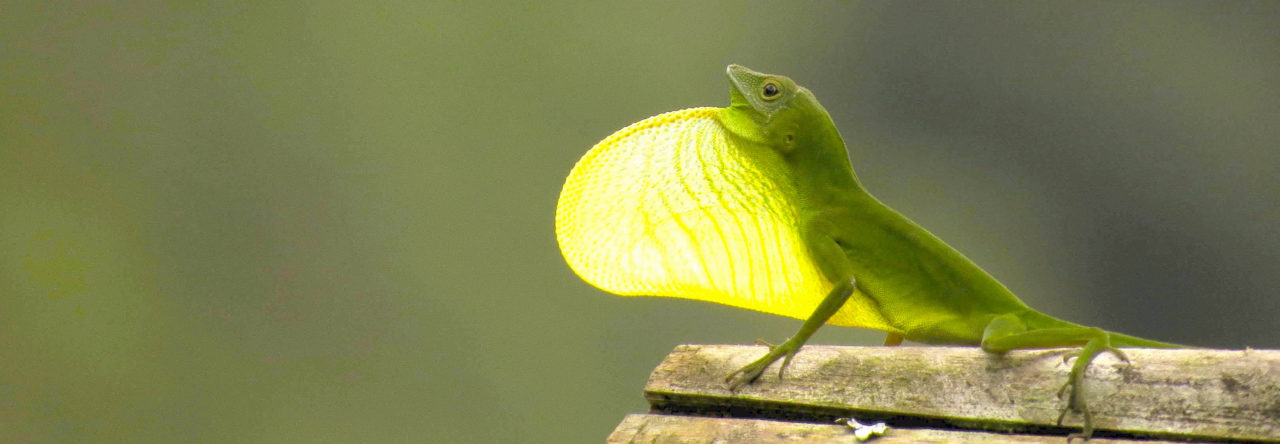
Anole perch height depending on whether it was raining and whether curly-tailed lizards (Leiocephalus carinatus) were observed on the plot.
Do you like standing out in the rain, especially when it’s cold? Me, neither. But that’s what the dastardly curly-tailed lizard forces brown anoles to do. Any sensible, semi-arboreal lizard would come down from the heights and seek shelter when it starts to rain, and that’s exactly what brown anoles do. Except when they’re in areas of high curly-tailed lizard activity, in which case they suck up and stay up high, shivering and being pelted by rain drops. That’s what research by Marta Lopez-Darias and colleagues (among which, yours truly) reported in a recent paper in Ecology. As the figure below illustrates, pretty much the only time the brown anoles drop down is when the weather goes to pot and curlies aren’t around: cool, windy, and very humid–in other words, when it’s raining. But if big boys have been cruising around on the ground, the anoles maintain their high perches.

Brown anole perch height as a function of a variety of weather variables and of curly-tailed lizard activity (in this figure, instead of presence/absence as in the figure above, predator activity was measured as the time-standardized number of active curly-tailed lizards observed on the plot).
All kidding aside, it’s not clear why they come down when it’s raining, but presumably there’s a benefit to it. One can only speculate what that is; my first guess: when it’s wet and cold, anoles are less able to notice approaching predators and less able to get away quickly because of their lower body temperature, hence they seek safer environs. Or perhaps there’s simply no potential prey afoot, and thus no reason to hang out in a high vantage point looking for them. Whatever the reason for doing so, it appears to be overruled by the threat of marauding curly tails.
As for details of the study: ten study plots were set up in various parts of Great Abaco. Plots were regularly censused, tabulating the number of curly-tailed lizards observed, the perch position of each anole observed, and a battery of meteorological variables.
- Evolution in Real Time on Lizard Island - March 23, 2025
- Spider Snags Adult Anolis osa - March 22, 2025
- An Homage to the Green Anoles of New Orleans - March 21, 2025


Robert Powell
Although our presentation wasn’t nearly as sexy, we described a very similar situation in anoles on Grenada in the presence or absence of a predator (Ameiva ameiva). The citation is: Simmons, P.M., B.T. Greene, K.E. Williamson, R. Powell, and J.S. Parmerlee, Jr. 2005. Ecological interactions within a lizard community on Grenada. Herpetologica 61: 124–134.